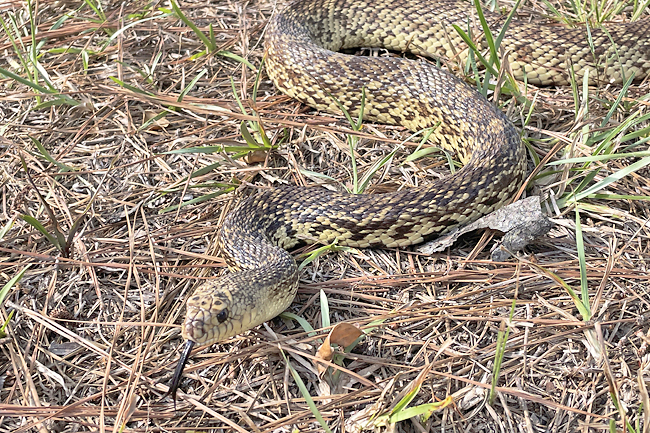NEW ORLEANS (AP) – Four areas in Louisiana and two in Texas should be protected as critical habitat for a rare snake that eats pocket gophers and takes over the rodents’ burrows, the federal government said.
Louisiana pinesnakes, which produce the largest eggs and hatchlings of any United States (US) snake, have been protected as threatened since 2018.
Their decline is largely due to the drastic reduction and fragmentation of grassy longleaf pine savannas with sandy soil. And since Louisiana pinesnakes’ five-inch-long eggs are so big that they lay only three to five at a time, losses are hard to replace.
The snakes grow to five feet long but are hard to count because they spend more than half their time underground. They also are camouflaged on brown pine needles, with black, brown and russet patches on a buff to yellowish background.
National forests cover most of four areas that the US Fish and Wildlife Service has proposed as critical habitat. Private land – including some covered by conservation agreements – comprises all of the smallest, in Texas, and virtually all of the biggest, in north Louisiana where the largest known population lives.

Critical habitat is a limited protection, affecting only contracts using federal money or requiring federal permits. Other critical habitat decisions have sparked challenges by landowners and dissension over what lands qualify for such designation.
In north Louisiana’s Bienville Parish, private owners hold more than 99 per cent of a proposed area about the size of Milwaukee – roughly 246 square kilometres. The smallest area, about 20 square kilometres in Scrappin’ Valley, Texas, is all privately held.
However, the Scrappin’ Valley land is already managed for endangered little red-cockaded woodpeckers, which also need open-canopied pine savannas, said Don Dietz, consulting biologist for a family that owns 70 per cent of the land.
“Red-cockaded woodpeckers eat a lot of ants, which need the open area below. So the habitat is essentially the same,” Dietz said.
Endangered species director at the environmental nonprofit Center for Biological Diversity Noah Greenwald said, “Far too few private landowners care about nature and ensuring species like the Louisiana pinesnake survive. When it does happen it’s really great.”
The Fish and Wildlife Service said two of seven known pinesnake populations are in Texas, but Dietz was dubious. He said he tried unsuccessfully for a decade to trap Louisiana pinesnakes to prove they lived in Scrappin’ Valley.
“I want to believe there’s some out there, but in Texas there may not be,” Dietz said.
Other populations live in Louisiana’s Bienville, Grant, Natchitoches, Sabine, and Vernon parishes, the federal agency said.







